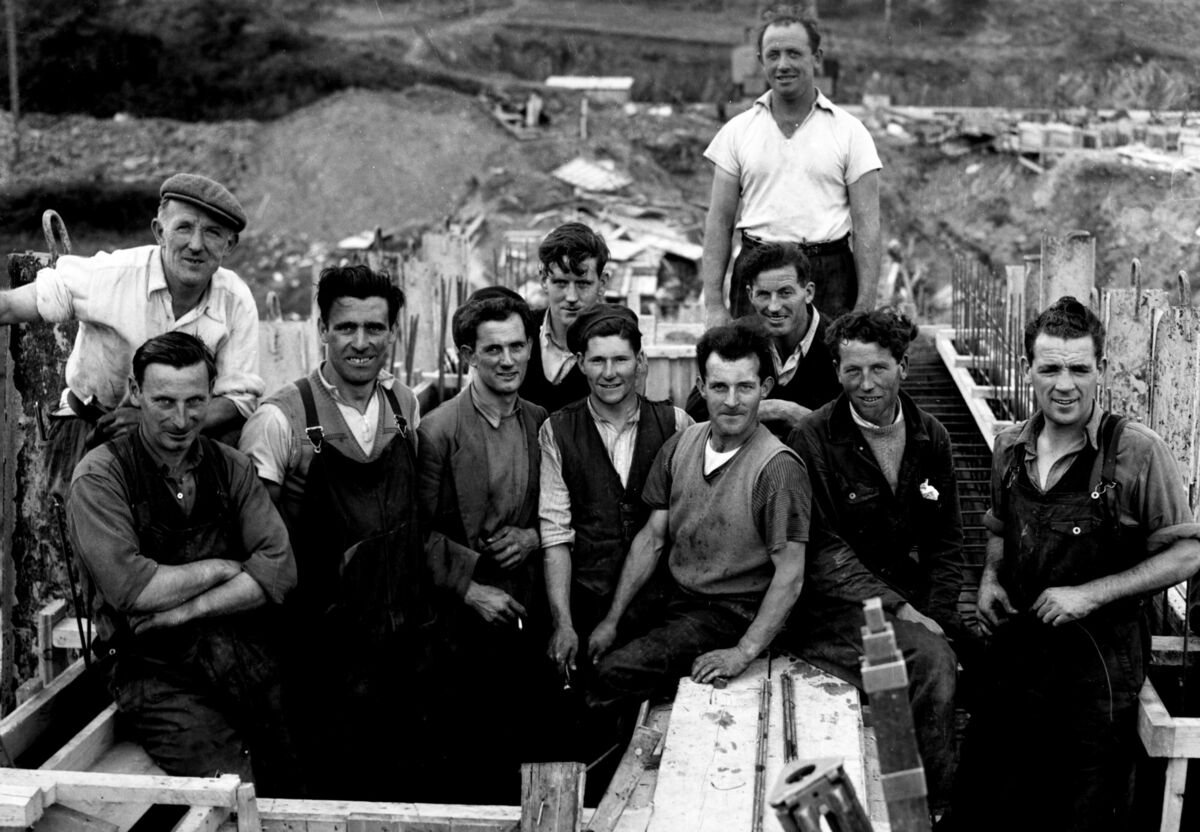Reforms must tackle judicial and public procurement processes to deliver infrastructure

Ardnacrusha remains the most ambitious project the Irish State has ever achieved. File photo
Ireland was in a truly dire state in 1924 when Cumann na nGaedheal and Derry TD, Patrick McGilligan, observed: "There are certain limited funds at our disposal. People may have to die in this country and may have to die through starvation."
McGilligan was speaking in his role as the State's minister for industry and commerce and his quote highlights the grim reality facing the broken Irish Free State following years of state and intra-state warfare leading to the call to dump arms in 1923.
Yet somehow, out of this depressing morass of poverty and conflict, emerged the crowning achievement in Irish engineering brilliance. Ardnacrusha remains the most ambitious project the Irish State has ever achieved — putting over 5,000 people to work to break the largest barrier to prosperity and economic development — electricity.
It was a Government taskforce, then established by Cumann na nGaedheal, that led to the commissioning of Ardnacrusha. It is understandable therefore if people are at least intrigued as to what should be expected of the new National Development Plan — another report by another Government taskforce.
Commissioned by minister Jack Chambers, the Accelerating Infrastructure Taskforce outlined a bleak vista in July highlighting Ireland's web of overlapping agencies on infrastructure, sometimes with contradictory objectives and too many decision points, compounded by a planning system that facilitates objections rather than meaningful consultation.
The aim of the follow-up report, due later this month, will be to offer solutions to these myriad problems — many of which have been identified and raised by the industry in countless submissions and strategy documents.
There is broad agreement that the judicial review process must be tackled both in the short term — by setting thresholds for challenges — and in the long term, by defining what constitutes the public good — an action undertaken by many of our European counterparts. A definition of the public good would allow engineers and design teams to create projects that adhere to that definition from conception.
The nimbyism at the heart of our current planning system will have to change if Ireland is to overcome the challenges it faces. Especially in relation to major public works contracts, we cannot have a tiny minority of people halting major developments of renewable energy and housing if we are to meet our national and international obligations in these areas.
Defining the public good in a legislatively coherent manner would significantly reduce the number of projects mired in the Irish court system and allow for more ambitious delivery targets over the next Government term.
There is some optimism in the construction and engineering sectors that the follow-up report from the Accelerating Infrastructure Taskforce will share some of the industry's most sought-after aims. One area ripe for reform is procurement.
Public sector projects have become less attractive and riskier than private sector work, due largely to unbalanced contract terms. Government contracts typically operate under “joint and several liability”, meaning that small engineering firms must insure themselves against the potential mistakes of much larger contractors — a situation that drives up costs, limits innovation, and drains taxpayer resources through unnecessary litigation.
Without reforming this, the State’s inertia will continue to slow down delivery and negate the dynamism of the sector. The result is that Irish citizens and communities face longer timeframes for essential housing and transport infrastructure due to drawn-out pre-construction delays.
It should be stressed, this is not a talent issue. We continue to talk ourselves into believing that Ireland cannot deliver large-scale infrastructure but history in this region tells a different story.

The Lee Hydroelectric Scheme at Inniscarra, completed in the 1950s, brought power and flood protection to the region long before sustainability became a policy buzzword. More recently, the N25 upgrade showcases the scale and complexity of modern Irish engineering.
These projects — along with the €600 million Cork Commuter Rail programme — demonstrate what can be achieved when political will and technical expertise align.
- Dónal O'Neill is senior policy advisor and membership executive with the Association of Consulting Engineers Ireland













